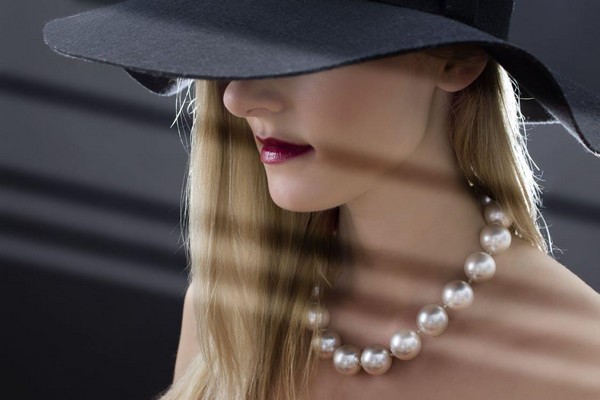
Traditionally, pearls have been a symbol of beauty and purity. In modern generations, pearls symbolize class and fashion. An example is how pearls are often a first choice to be worn on a wedding day. It’s important to realize that pearls are created within a mollusk, when an irritant arises. There are two classifications of pearls, natural and cultured. Natural pearls are what they sound like. They are created in nature. In turn, cultured pearls are made when a person initiates the pearl-making process. Each creates their own value and set of characteristics, which create their price range. Which pearl you’re in the market for will depend on price points, colors, shapes and sizes. Below are five types of pearls to choose from.
- Akoya Pearls
When you imagine pearls, do you see Audrey Hepburn? Or maybe a strand of white pearls? You’re seeing Akoya pearls. Typically grown off the coast of Japan, these are the classic choice of pearls and have been for 100 years. This is a saltwater pearl and very rarely produces more than two pearls per harvest. Akoyas are known for their round shape and crisp color. When it comes to sizing, most Akoya pearls range for 4 mm to 10 mm. Akoya pearls are rated as top grade pearls, meaning they are virtually flawless and have a high luster. This type of pearl is the most sought after by retailers and consumers but is considered the third most valuable type of pearl. Prices can range from $300 to $10,000 per strand.
- Freshwater Pearls
As the name presumes, freshwater pearls are grown in freshwater lakes, ponds and rivers, mainly in China. These pearls are the most affordable ones in the market. Their key characteristics are their baroque shapes, white and pastel colors and softer reflectiveness. Freshwater pearls offer a vast variety of options since they can be perfectly rounded or baroque shaped. Although freshwater pearls are extremely difficult to find, increasing their value. These pearls range in size from 5 mm to 12 mm. For the shopper, freshwater pearls are a fashion statement due to their unique colors and shapes. This is why designers use freshwater pearls in their jewelry. Expected prices for freshwater strands are between $50 and $2,000.
- Tahitian Pearls
Tahitian pearls are grown in French Polynesia, and they are known for their rich, dark color. In fact, they are the only type of pearls to be naturally dark. The exotic colors range in blue, purple, green, brown and silver. An interesting fact is Tahitian pearls are never a “true” black. If you happen to come across a freshwater pearl, or any other pearl for that matter, that appears black, it has been dyed. Shapes vary from round, oval, teardrop and baroque and are between 8 mm to 15 mm. Round Tahitian pearls are rare, and all shapes of this pearl are highly sought after, making this pearl the second most valuable type of pearl. The going price for a strand of these pearls is $500 to $25,000.
- South Sea Pearls
Known as the largest saltwater pearls grown today, South Sea pearls are grown mainly in Australia, the Philippines and Indonesia. These pearls range from white to gold in color and are very valuable. When it comes to this pearl, one color is more valuable than the other. The deep gold South Sea pearls, often called “24 karats”, is thought to be the most valuable South Sea pearls. To find a perfectly round South Sea pearl would be extremely rare due to their size, but it’s not impossible. More common shapes are baroques, ovals and drops. The most common sizes are 10 mm to 14mm. South Sea pearls rate high on the pear grading scale and are extremely valuable. Often called the “Rolls-Royce” of pearls, South Sea pearls range from $1,000 to $100,000 per strand, making them the number one most valuable pearl type.
- Cultured Pearls
Much different than the naturally grown pearls, cultured pearls are grown on pearl farms. These pearl farms raise the mollusks to make pearls. Once old enough, the mollusk is inserted with a mother-of-pearl bead nucleus and then returned to the water until the pearl is formed. Some pearls don’t form at all and some are considered low quality. However, pearl farmers can produce much more pearls than what is produced in a natural habitat. As expected, cultured pearls are not a rarity and more affordable. Nevertheless, they do offer a larger variety of options.
Conclusion
That rounds out our list of the five types of pearls to choose from. Each type depends on the type of water and the geographic location it is grown. Saltwater and freshwater pearls are created naturally, making them more valuable and expensive. However, cultured pearls, harvested by pearl farmers, offer a genuine substitute to natural pearls with more affordability and quality pearls. When in the market for pearls, it’s important to note what type you’re looking for. This can be narrowed down by color, size, shape and price. These five types of pearls have their own characteristics which make them unique to the market.
